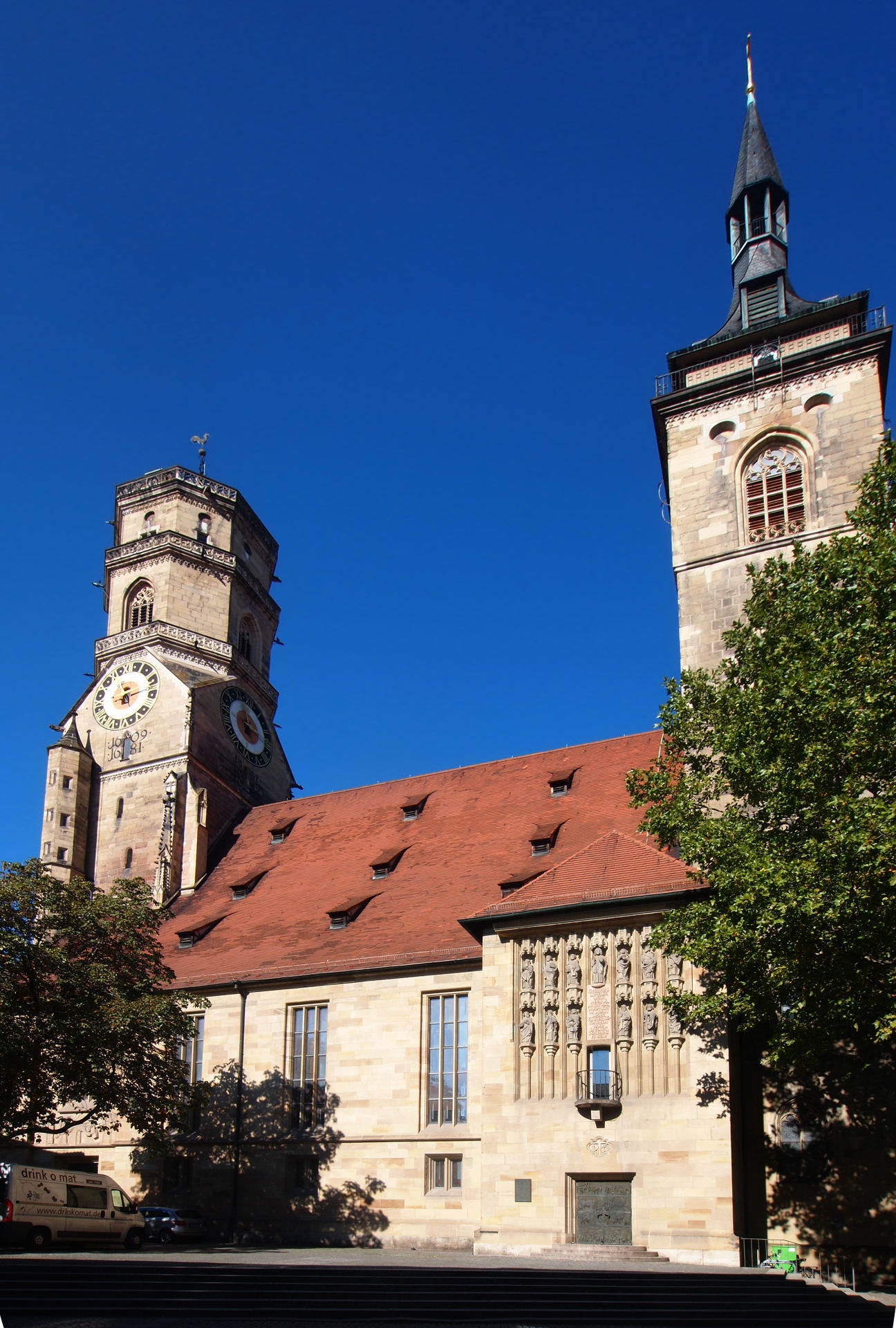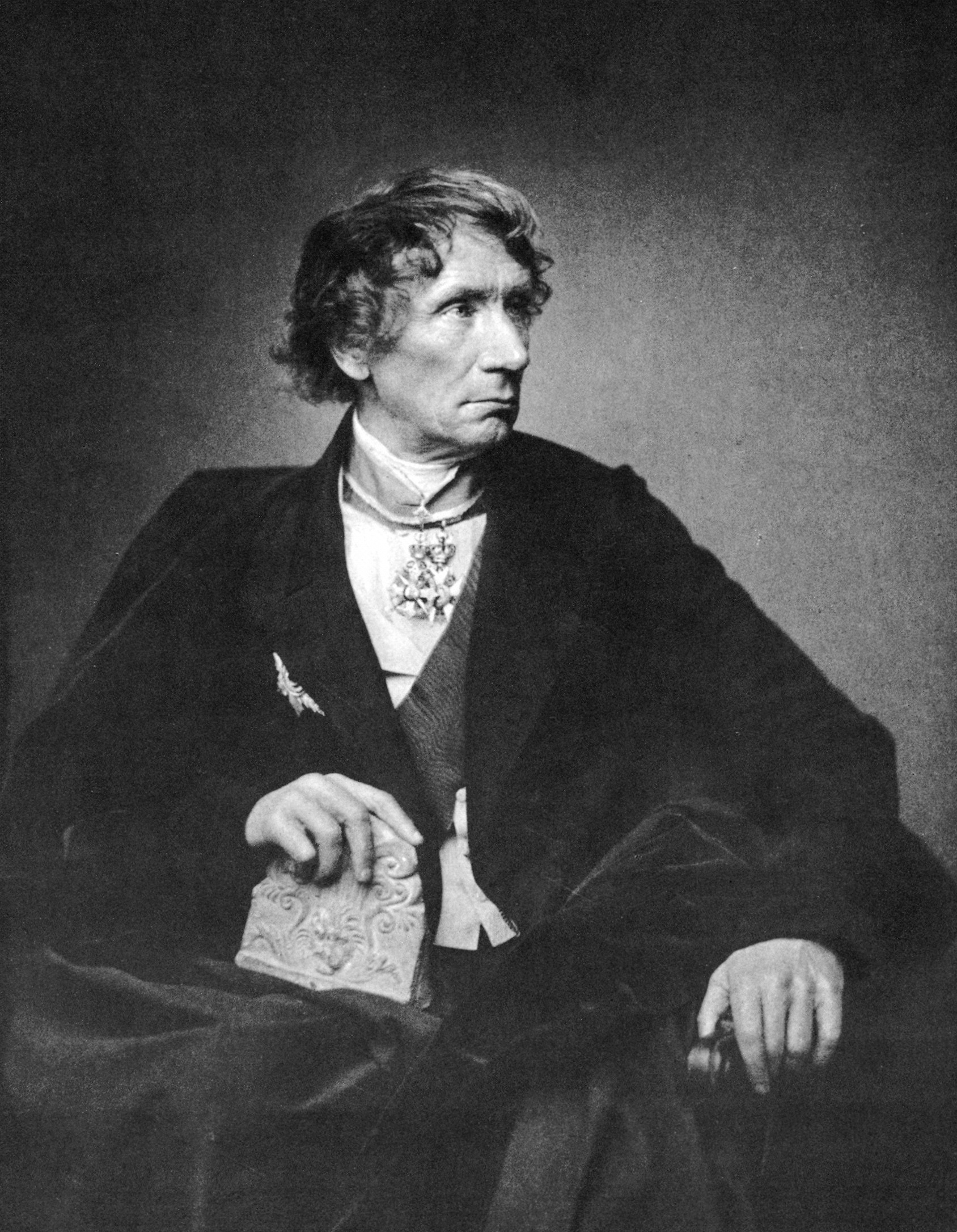|
Württemberg Mausoleum
The Württemberg Mausoleum is a mausoleum located on the Württemberg, in the Rotenberg borough of Untertürkheim, in Stuttgart. It was designed by Giovanni Salucci for King William I of Württemberg to house the remains his second wife, Catherine Pavlovna of Russia. Construction elapsed over four years, from 1820 to 1824, while work on its decor lasted another four years. The remains of William I, Catherine, and their daughter , are housed in the mausoleum. Around 40,000 people visited the Mausoleum in 2018. History The Napoleonic Wars had drastically changed the balance of power in Europe, but especially in Germany. There Napoleon had reorganized the territories of the former Holy Roman Empire into several new French satellite states. Among those was the Kingdom of Württemberg, ruled by King Frederick I, previously Duke Frederick II, who had been coerced into alliance with Napoleonic France. In exchange for fealty to France and auxiliary Württemberger troops, Frederick ... [...More Info...] [...Related Items...] OR: [Wikipedia] [Google] [Baidu] |
Congress Of Vienna
The Congress of Vienna (, ) of 1814–1815 was a series of international diplomatic meetings to discuss and agree upon a possible new layout of the European political and constitutional order after the downfall of the French Emperor Napoleon Bonaparte. Participants were representatives of all European powers and other stakeholders, chaired by Austrian statesman Klemens von Metternich, and held in Vienna from September 1814 to June 1815. The objective of the Congress was to provide a long-term peace plan for Europe by settling critical issues arising from the French Revolutionary Wars and the Napoleonic Wars without the use of (military) violence. The goal was not simply to restore old boundaries, but to resize the main powers so they could balance each other and remain at peace, being at the same time shepherds for the smaller powers. More fundamentally, strongly generalising, conservative thinking leaders like Von Metternich also sought to restrain or eliminate republican ... [...More Info...] [...Related Items...] OR: [Wikipedia] [Google] [Baidu] |
Stiftskirche, Stuttgart
The Stiftskirche (''Collegiate Church'') is an inner-city church in Stuttgart, the capital of Baden-Württemberg, Germany. It is the main church of the Evangelical-Lutheran Church in Württemberg (''Evangelische Landeskirche in Württemberg'') as well as the parish church of the evangelical (Lutheran) inner-city church district of Stuttgart. History and structure Recent research found structures of a small Romanesque church dating to the 10th and 11th centuries within the outline of today's church. In 1240, a stately three-naved church with two towers was built in the Romanic style, apparently by the Counts of Württemberg who from around that time were residing in the nearby Old Castle. The remains of Ulrich I, Count of Württemberg and his second wife, Countess of Württemberg, Agnes von Schlesien-Liegnitz (both died in 1265) rest in a double tomb in the south tower chapel that dates to the late 13th century. When Stuttgart became the new residence of the rulers of Würt ... [...More Info...] [...Related Items...] OR: [Wikipedia] [Google] [Baidu] |
Neoclassical Architecture
Neoclassical architecture is an architectural style produced by the Neoclassical movement that began in the mid-18th century in Italy and France. It became one of the most prominent architectural styles in the Western world. The prevailing styles of architecture in most of Europe for the previous two centuries, Renaissance architecture and Baroque architecture, already represented partial revivals of the Classical architecture of ancient Rome and (much less) ancient Greek architecture, but the Neoclassical movement aimed to strip away the excesses of Late Baroque and return to a purer and more authentic classical style, adapted to modern purposes. The development of archaeology and published accurate records of surviving classical buildings was crucial in the emergence of Neoclassical architecture. In many countries, there was an initial wave essentially drawing on Roman architecture, followed, from about the start of the 19th century, by a second wave of Greek Revival archi ... [...More Info...] [...Related Items...] OR: [Wikipedia] [Google] [Baidu] |
Heinrich Hübsch
Heinrich Hübsch (9 February 1795 – 3 April 1863) was a German architect. After studies in Heidelberg (1813–15) and at Friedrich Weinbrenner's school of architecture in Karlsruhe (1815–17) he traveled extensively in Greece and Italy (1817–24). In 1831 he was appointed Oberbaurat (inspector of buildings) at Karlsruhe. He designed many churches and other public buildings, mainly in the Grand Duchy of Baden, and is also known for his writings. In his book ''In welchem Style sollen wir bauen?'' (''In which style should we build?'', 1828) he distanced himself from Weinbrenner's neoclassical style. ''Die altchristlichen Kirchen'' (Karlsruhe, 1862) is a work on basilican architecture, published also in French as ''Monuments de l'architecture chrétienne''. Hübsch is credited with creating the Rundbogenstil architectural style.Bergdoll, Barry, European Architecture, 1750-1890, Oxford, 2000, pp. 184-9 Publications ( s:de:Heinrich Hübsch) Buildings * Polytechnical School ... [...More Info...] [...Related Items...] OR: [Wikipedia] [Google] [Baidu] |
Leo Von Klenze
Leo von Klenze (Franz Karl Leopold von Klenze; 29 February 1784, Buchladen (Bockelah / Bocla) near Schladen – 26 January 1864, Munich) was a German neoclassicist architect, painter and writer. Court architect of Bavarian King Ludwig I, Leo von Klenze was one of the most prominent representatives of Greek revival style. Biography Von Klenze studied architecture and public building finance under Friedrich Gilly in Berlin, and worked as an apprentice to Charles Percier and Pierre François Léonard Fontaine in Paris. Between 1808 and 1813 he was a court architect of Jérôme Bonaparte, King of Westphalia. Later he moved to Bavaria and in 1816 began to work as court architect of Ludwig I. The King's passion for Hellenism shaped the architectural style of von Klenze. He built many neoclassical buildings in Munich, including the Ruhmeshalle and Monopteros temple. On Königsplatz he designed probably the best known modern Hellenistic architectural ensemble. Near Reg ... [...More Info...] [...Related Items...] OR: [Wikipedia] [Google] [Baidu] |
Neo-Gothic Architecture
Gothic Revival (also referred to as Victorian Gothic, neo-Gothic, or Gothick) is an architectural movement that began in the late 1740s in England. The movement gained momentum and expanded in the first half of the 19th century, as increasingly serious and learned admirers of the neo-Gothic styles sought to revive medieval Gothic architecture, intending to complement or even supersede the neoclassical styles prevalent at the time. Gothic Revival draws upon features of medieval examples, including decorative patterns, finials, lancet windows, and hood moulds. By the middle of the 19th century, Gothic had become the preeminent architectural style in the Western world, only to fall out of fashion in the 1880s and early 1890s. The Gothic Revival movement's roots are intertwined with philosophical movements associated with Catholicism and a re-awakening of high church or Anglo-Catholic belief concerned by the growth of religious nonconformism. Ultimately, the "Anglo-Catholicism" tra ... [...More Info...] [...Related Items...] OR: [Wikipedia] [Google] [Baidu] |
Frederick Barbarossa
Frederick Barbarossa (December 1122 – 10 June 1190), also known as Frederick I (german: link=no, Friedrich I, it, Federico I), was the Holy Roman Emperor from 1155 until his death 35 years later. He was elected King of Germany in Frankfurt on 4 March 1152 and crowned in Aachen on 9 March 1152. He was crowned King of Italy on 24 April 1155 in Pavia and emperor by Pope Adrian IV on 18 June 1155 in Rome. Two years later, the term ' ("holy") first appeared in a document in connection with his empire. He was later formally crowned King of Burgundy, at Arles on 30 June 1178. He was named by the northern Italian cities which he attempted to rule: Barbarossa means "red beard" in Italian; in German, he was known as ', which means "Emperor Redbeard" in English. The prevalence of the Italian nickname, even in later German usage, reflects the centrality of the Italian campaigns to his career. Frederick was by inheritance Duke of Swabia (1147–1152, as Frederick III) before ... [...More Info...] [...Related Items...] OR: [Wikipedia] [Google] [Baidu] |
House Of Württemberg
The House of Württemberg is a German dynasty and former royal family from Württemberg. History County The House probably originated in the vicinity of the Salian dynasty. Around 1080 the ancestors of modern Württemberg, which was then called "Wirtemberg", settled in the Stuttgart area. Conrad of Württemberg became heir to the House of Beutelsbach and built the Wirtemberg Castle. Around 1089, he was made Count. Their domains, initially only the immediate surroundings of the castle included, increased steadily, mainly through acquisitions such as those from impoverished homes of Tübingen. Duchy At the Diet of Worms in 1495, Count Eberhard V was raised to Duke ('' Herzog'') by the German King, later Holy Roman Emperor, Maximilian I. During 1534 to 1537 Duke Ulrich introduced the Protestant Reformation, and the country became Protestant. Duke Ulrich became head of the local Protestant Church. In the 18th Century, the Protestant male line became extinct, the Head of ... [...More Info...] [...Related Items...] OR: [Wikipedia] [Google] [Baidu] |
Wirtemberg Castle
Wirtemberg Castle, a ruined hilltop castle, is the second family seat of the House of Württemberg, whose ancestors had abandoned Beutelsbach Castle (also known as "Kappelberg Castle"). Built on the eponymous Württemberg mountain in a spur of the Schurwald around above sea level, it is located in the current municipality of Rotenberg in Stuttgart, between Bad Cannstatt and Esslingen am Neckar. Between 1080 and 1819, three castles with this name existed in the area. History First castle The first castle was constructed in 1080 and has been described as "''fortification with three surrounding walls, several buildings including extensive stables, a courtyard and a stately manor''." The castle's chapel was consecrated on February 7, 1083. Conrad I, Count of Württemberg documented the castle on May 2, 1092, signing as a witness. This is the oldest document featuring the name "''Württemberg''." From 1092 to 1495, the castle repeatedly served as the family seat of numerous ... [...More Info...] [...Related Items...] OR: [Wikipedia] [Google] [Baidu] |
JH Renz - Burg Wirtemberg Um 1600 (Lithographie Ca
JH may refer to: * Jh (digraph), in written language * JH (hash function), in cryptography * Japan Highway Public Corporation * Jharkhand, India (ISO 3166: JH) * Juvenile hormone * Fuji Dream Airlines (IATA: JH), a Japanese airline * Harlequin Air was an airline with its headquarters on the grounds of Fukuoka Airport in Hakata-ku, Fukuoka, Japan. It was owned by Japan Air System (later ''Japan Airlines Domestic'' in 2004), operating domestic passenger services. Scheduled flights were wh ... (IATA: JH), a former Japanese airline * Nordeste Linhas Aéreas Regionais (IATA: JH)a former Brazilian airline {{disambiguation ... [...More Info...] [...Related Items...] OR: [Wikipedia] [Google] [Baidu] |
Year Without Summer
The year 1816 is known as the Year Without a Summer because of severe climate abnormalities that caused average global temperatures to decrease by . Summer temperatures in Europe were the coldest on record between the years of 1766–2000. This resulted in major food shortages across the Northern Hemisphere. Evidence suggests that the anomaly was predominantly a volcanic winter event caused by the massive 1815 eruption of Mount Tambora in April in the Dutch East Indies (known today as Indonesia). This eruption was the largest in at least 1,300 years (after the hypothesized eruption causing the volcanic winter of 536), and was perhaps exacerbated by the 1814 eruption of Mayon in the Philippines. Description The Year Without a Summer was an agricultural disaster. Historian John D. Post has called this "the last great subsistence crisis in the Western world".Evans, RoberBlast from the Past ''Smithsonian Magazine''. July 2002, p. 2 The climatic aberrations of 1816 had their greates ... [...More Info...] [...Related Items...] OR: [Wikipedia] [Google] [Baidu] |


_-_facade_on_Piazza_dei_signori.jpg)



